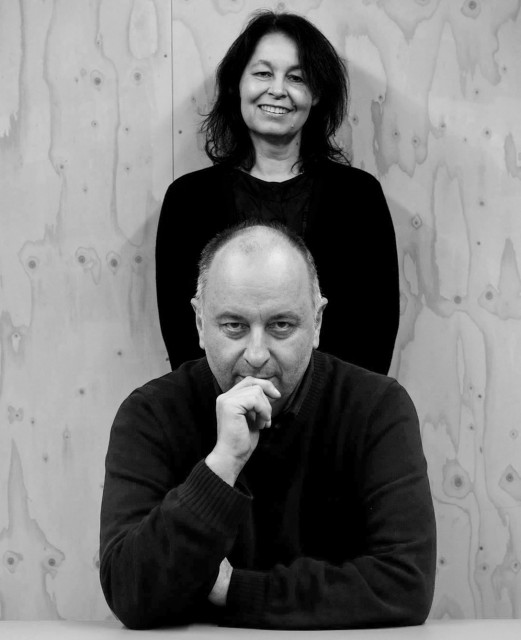Encounters
(autrotranslated) After ten years, the Concert Hall has become a respected player and wrote itself into an international network. The building is the work of Robbrecht & Daem architects Opened in 2002, the year when Bruges was the cultural capital of Europe. It blew a fresh wind through the historic city.
 Filip Dujardin
Filip Dujardin
The relationship between art and architecture is a thread that runs through the entire oeuvre of Paul Robbrecht and Hilde Daem. They say that art provides a critical voltage to certain places, “without extreme images need to be. Sometimes there is a counter-world. Instead of fully integrating art, architecture must accept the critical images. “This indicates a special collaboration between artists and architects detached from the pursuit of a Gesamtkunstwerk. In 2001, the architects of the culture prize of the University of Leuven in recognition of their work in which thinking about architecture from a confrontation with the art happens.
Before the concert there was cooperation with the Belgian painter Raoul Dekeyser and with the sadly prematurely deceased artist Juan Muñoz. Other interventions in the Concertgebouw happened by Anouk De Clercq, Dirk Braeckman, Hanna Haas Lahti, Malou Swinnen, Carl De Keyzer. Author-director Peter Verhelst enriched the back of the seats in the concert hall with a continuous ribbon text describes Bruges without the name is to mention.
“One day she appeared, swarmed out
the city and nestled.
We gave them to eat ourselves.
One day they were gone.
At night we visited
in our own strange colored dreams. “
(Peter Verhelst)
Annelies Vantyghem describes how this poem “tells of a city where one day an elusive invasion perches that brings all people into raptures. From time presences crystallize into votes that keep people with sensual whispering gossip in the grip. Desire, fear, passion and disorientation dominate the city, where – as in Bruges – canals, bridges and a friendly water and boats and carriages glide past, and where – as in the heart of the Concertgebouw – neck veins are chucking, throats vibrate sounds and voices swell to songs that tell and do all look different. We can read one or several fragments of text from our seat. Nevertheless, it could trigger – however minimal – borne along on the stream of a daydream. What we may or may not read, fueled by germs in the text is the result of our imagination in literary interaction with this installation. “
Peter Verhelst is a poet, novelist, playwright, theater director, performer … He has a very sensual, physical, visual language. An example is the opening line from “Memoirs of a leopard”: “You bend you over and you put your fingertips on those words. From left to right. Slow caress you keep this sense until the fur starts to crackle. “Peter Verhelst has won numerous awards and is currently city poet of Ghent.
To celebrate the tenth anniversary of the concert we invite architect Paul Robbrecht in conversation with writer-director Peter Verhelst. On their readings of the building, about their views on architecture, about the role of art and architecture, about their encounter, you can learn more in this double-talk will be moderated by Jan Florizoone.
Afterwards there is the possibility to visit exhibition “Pacing Through Architecture ‘(runs until March 10, 2012), co-produced by BOZAR ARCHITECTURE, A + Belgian magazine for architecture, Whitechapel Gallery with the support of the Flemish Government, Tollens and Materis peintures.






